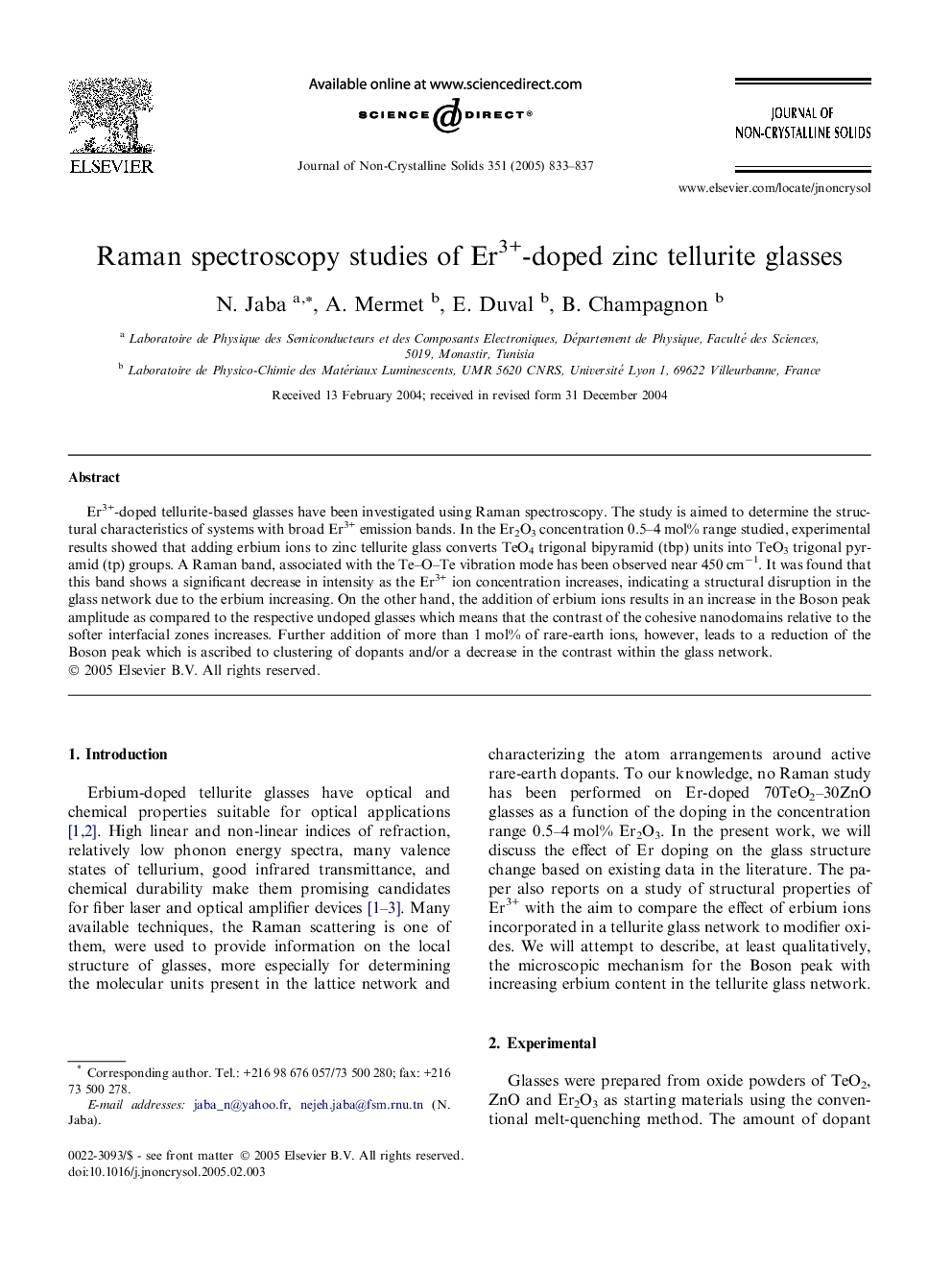| Article ID | Journal | Published Year | Pages | File Type |
|---|---|---|---|---|
| 9778160 | Journal of Non-Crystalline Solids | 2005 | 5 Pages |
Abstract
Er3+-doped tellurite-based glasses have been investigated using Raman spectroscopy. The study is aimed to determine the structural characteristics of systems with broad Er3+ emission bands. In the Er2O3 concentration 0.5-4Â mol% range studied, experimental results showed that adding erbium ions to zinc tellurite glass converts TeO4 trigonal bipyramid (tbp) units into TeO3 trigonal pyramid (tp) groups. A Raman band, associated with the Te-O-Te vibration mode has been observed near 450Â cmâ1. It was found that this band shows a significant decrease in intensity as the Er3+ ion concentration increases, indicating a structural disruption in the glass network due to the erbium increasing. On the other hand, the addition of erbium ions results in an increase in the Boson peak amplitude as compared to the respective undoped glasses which means that the contrast of the cohesive nanodomains relative to the softer interfacial zones increases. Further addition of more than 1Â mol% of rare-earth ions, however, leads to a reduction of the Boson peak which is ascribed to clustering of dopants and/or a decrease in the contrast within the glass network.
Related Topics
Physical Sciences and Engineering
Materials Science
Ceramics and Composites
Authors
N. Jaba, A. Mermet, E. Duval, B. Champagnon,
